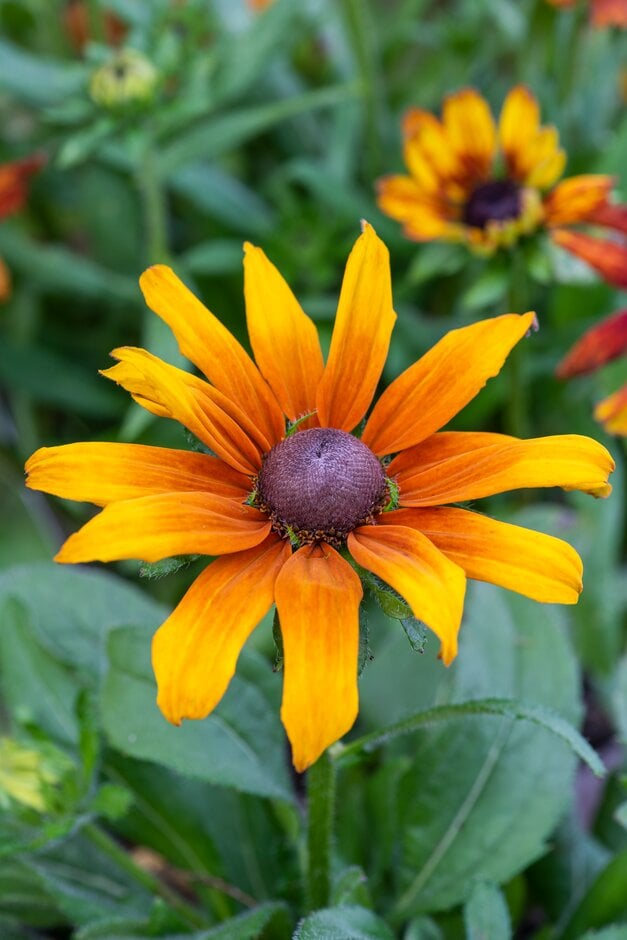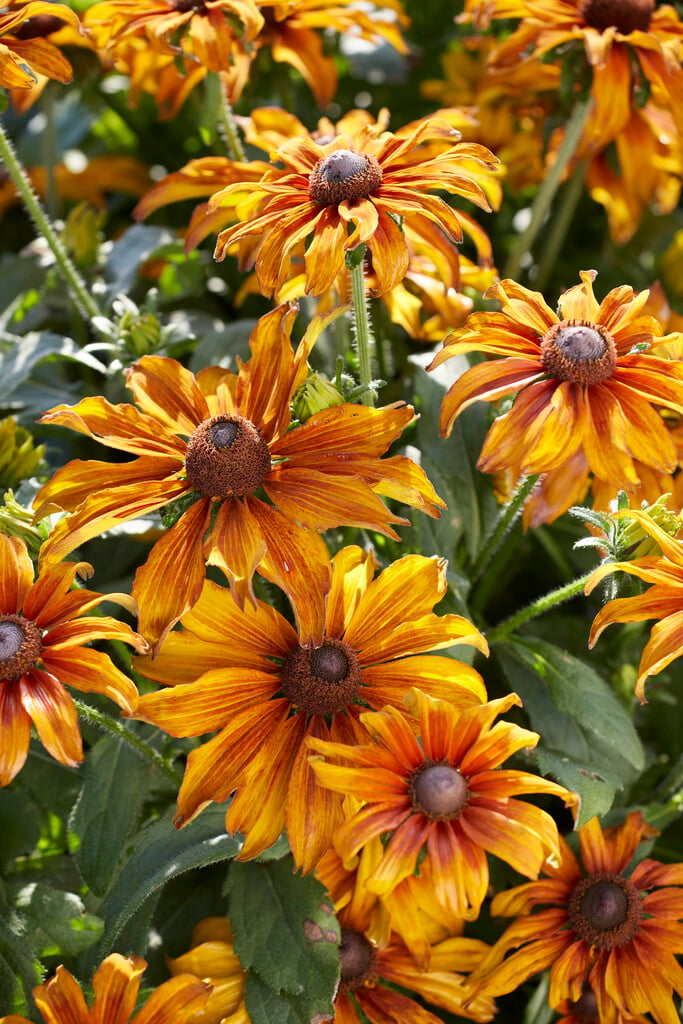Rudbeckia Summerina Butterscotch Biscuit ('Et Rdb 410'PBR) (Summerina Series)
coneflower [Summerina Butterscotch Biscuit]
A bushy upright, clump-forming herbaceous perennial with lance-shaped somewhat toothed dark green hairy leaves. It produces numerous large buttery yellow, darker butterscotch orange petals towards the base around a brown central cone
Size
Ultimate height
0.5–1 metresTime to ultimate height
2–5 yearsUltimate spread
0.1–0.5 metresGrowing conditions
Moisture
Moist but well–drained, Well–drainedpH
Acid, Alkaline, NeutralColour & scent
| Stem | Flower | Foliage | Fruit | |
| Spring | Green | |||
|---|---|---|---|---|
| Summer | Brown Orange Yellow | Green | ||
| Autumn | Brown Orange Yellow | |||
| Winter |
Position
- Full sun
Aspect
South–facing or West–facing
Exposure
Exposed or Sheltered Hardiness
H4Botanical details
- Family
- Asteraceae
- Native to GB / Ireland
- No
- Foliage
- Deciduous
- Habit
- Columnar upright, Clump forming
- Genus
Rudbeckia may be annuals, biennials or rhizomatous herbaceous perennials, with simple or pinnately divided leaves and large daisy-like flower-heads with yellow or orange rays surrounding a prominent conical disk
- Name status
Trade
How to grow
Cultivation
Grow in well-drained or moist, but well-drained, moderately fertile soil in a sunny spot or light dappled shade. Able to tolerate drought once established.
Propagation
Propagate by division
Suggested planting locations and garden types
- Cottage and informal garden
- Prairie planting
- Wildflower meadow
- Wildlife gardens
- Patio and container plants
- Flower borders and beds
- Cut flowers
Pruning
Cut back stems that have flowered or leave for winter interest.
Pests
Generally pest-free
Diseases
May be susceptible to grey moulds if air circulation is poor
Love gardening
Sign up to receive regular gardening tips, inspiration, offers and more
View our Privacy Policy
Get involved
The Royal Horticultural Society is the UK’s leading gardening charity. We aim to enrich everyone’s life through plants, and make the UK a greener and more beautiful place.

